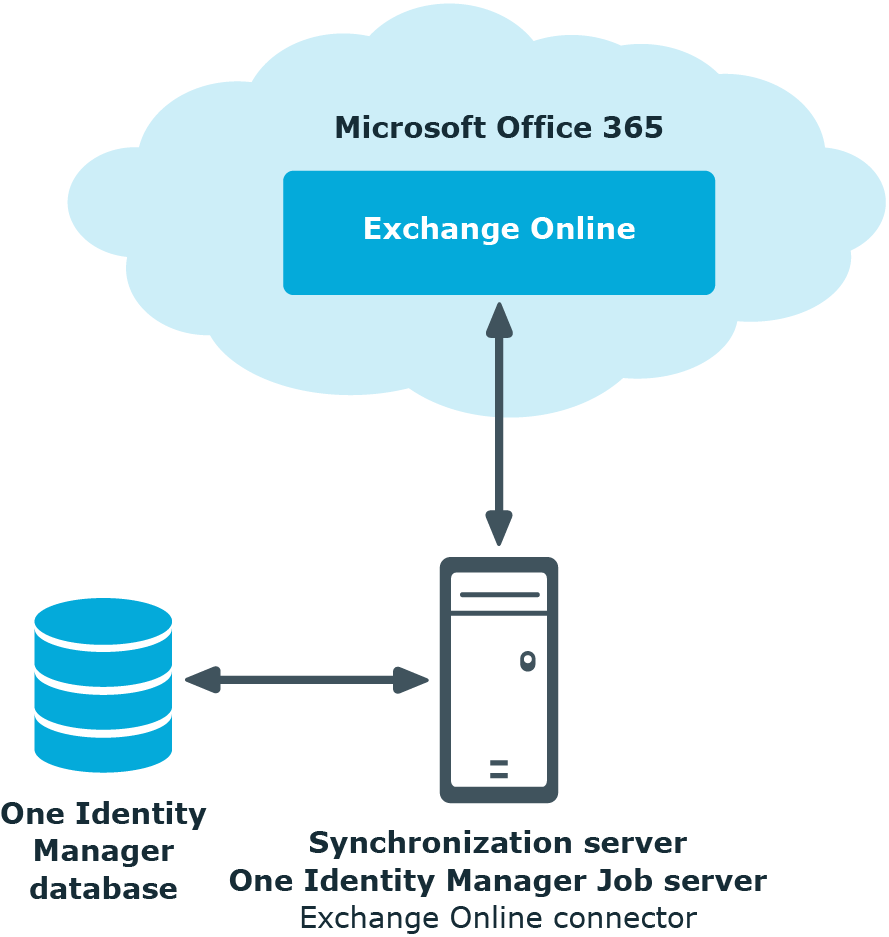About this guide
The One Identity Manager Administration Guide for Connecting to Exchange Online describes how you set up synchronization of Exchange Online with One Identity Manager. The guide explains how to use One Identity Manager to manage the mailboxes, email users, mail contacts, mail-enabled distribution groups, and Office 365 groups of your Exchange Online environment.
This guide is intended for end users, system administrators, consultants, analysts, and any other IT professionals using the product.
NOTE: This guide describes One Identity Manager functionality available to the default user. It is possible that not all the functions described here are available to you. This depends on your system configuration and permissions.
Available documentation
You can access One Identity Manager documentation in the Manager and in the Designer by selecting the Help > Search menu item. The online version of One Identity Manager documentation is available in the Support portal under Technical Documentation. You will find videos with additional information at www.YouTube.com/OneIdentity.
Managing Exchange Online environments
The key aspects of administrating an Exchange Online system with One Identity Manager are local mapping of mailboxes, mail users, mail contacts, mail-enabled distribution groups, and Office 365 groups from a cloud environment.
The system information for the Exchange Online structure is loaded into the One Identity Manager database during data synchronization. It is only possible to customize certain system information in One Identity Manager due to the complex dependencies and far reaching effects of changes.
For more information about the Exchange Online structure, see the Exchange Online documentation from Microsoft.
NOTE: The Exchange Online module must be installed as a prerequisite for managing One Identity Manager in Exchange Online Module For more information about installing, see the One Identity Manager Installation Guide.
Architecture overview
To access Exchange Online organizational data, the Exchange Online connector is installed on a synchronization server. The synchronization server ensures data is compared between the One Identity Manager database and Exchange Online. The Exchange Online connector is part of the Exchange Online Module and responsible for communicating with the Microsoft Office 365 subscriptions of Exchange Online in the cloud. The Exchange Online PowerShell V3 module is used to access Exchange Online data.
To access the data in an Exchange Online organization, the Azure Active Directory target system containing the Exchange Online organization must be synchronized.
Figure 1: The synchronization architecture

One Identity Manager users for managing Exchange Online
The following users are used for setting up and administration of Exchange Online.
Table 1: Users
|
Target system administrators |
Target system administrators must be assigned to the Target systems | Administrators application role.
Users with this application role:
-
Administer application roles for individual target system types.
-
Specify the target system manager.
-
Set up other application roles for target system managers if required.
-
Specify which application roles for target system managers are mutually exclusive.
-
Authorize other identities to be target system administrators.
-
Do not assume any administrative tasks within the target system. |
|
Target system managers |
Target system managers must be assigned to the Target systems | Exchange Online application role or a child application role.
Users with this application role:
-
Assume administrative tasks for the target system.
-
Create, change, or delete target system objects.
-
Edit password policies for the target system.
-
Prepare groups to add to the IT Shop.
-
Can add identities that do not have the Primary identity identity type.
-
Configure synchronization in the Synchronization Editor and define the mapping for comparing target systems and One Identity Manager.
-
Edit the synchronization's target system types and outstanding objects.
-
Authorize other identities within their area of responsibility as target system managers and create child application roles if required. |
|
One Identity Manager administrators |
administrator and administrative system users Administrative system users are not added to application roles.
administrators:
-
Create customized permissions groups for application roles for role-based login to administration tools in the Designer as required.
-
Create system users and permissions groups for non role-based login to administration tools in the Designer as required.
-
Enable or disable additional configuration parameters in the Designer as required.
-
Create custom processes in the Designer as required.
-
Create and configure schedules as required.
-
Create and configure password policies as required. |

